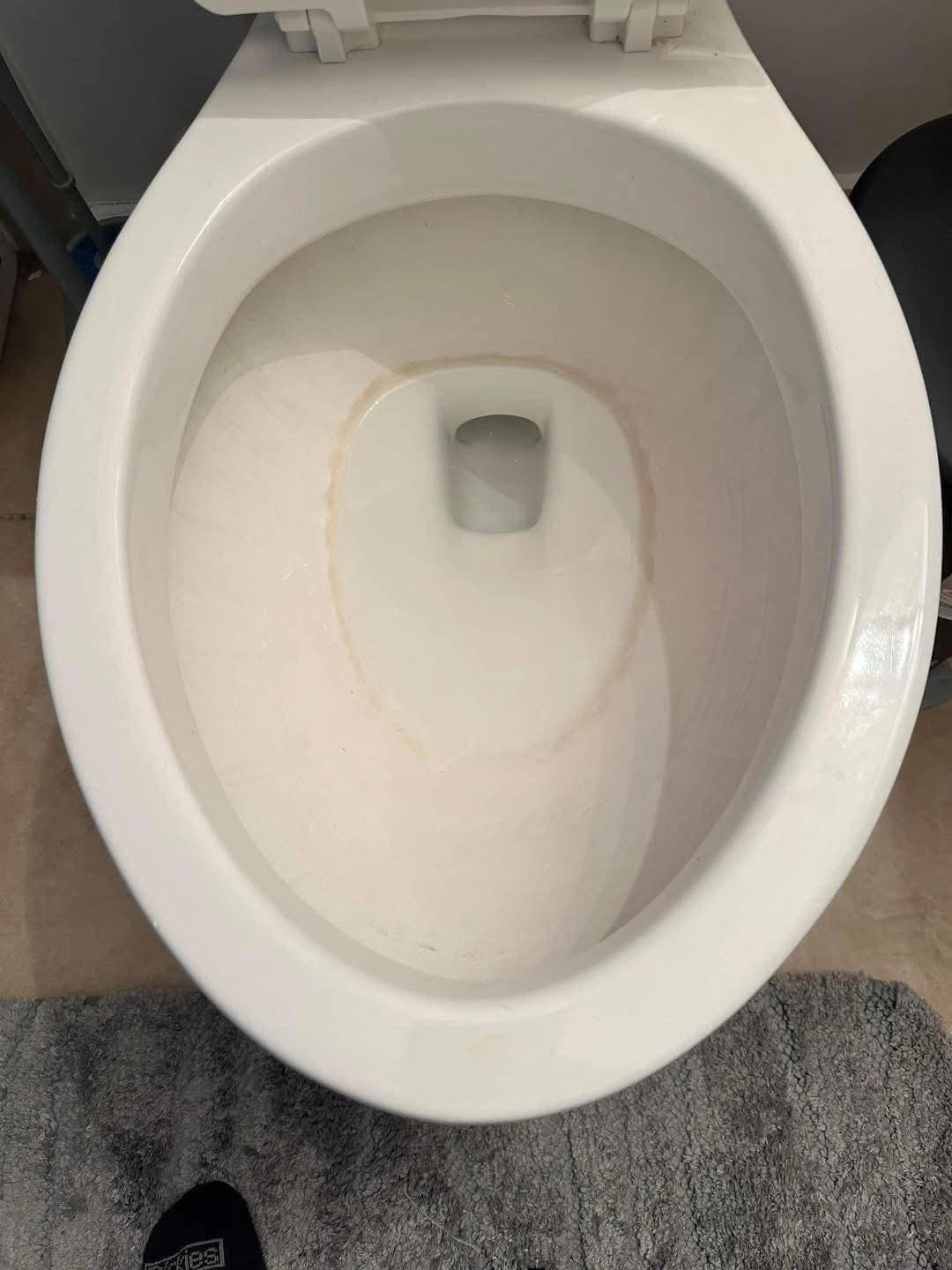Cleaning the toilet is one of those dreaded household chores that we all wish we could skip. But when hard water stains start forming, it takes the task from merely unpleasant to outright maddening. You scrub and scrub, yet those chalky, crusty mineral rings stubbornly cling to the inside of the bowl like they’re cemented in place. If your toilet has become a victim of those unsightly rings caused by hard water, don’t stress—there’s an easy and affordable method that doesn’t require hours of elbow grease or costly cleaning products. You probably already have the solution sitting in your kitchen: distilled vinegar. That’s right, vinegar isn’t just for cooking—it’s a powerful natural cleaning agent that’s both eco-friendly and effective. It cuts through the calcium and magnesium buildup that hard water leaves behind, all without relying on harsh chemicals or expensive commercial products.

To get started with this simple cleaning trick, first prepare the toilet bowl. The key is to reduce the water level inside the bowl so the vinegar can come in direct contact with the stained surface. Using a regular plunger, push the water down the drain with a few strong pumps. You don’t need to get the bowl completely dry, but the lower the water, the better your results will be. Once the water is lowered, pour in a generous amount of distilled white vinegar, making sure it thoroughly covers the stained areas. You’ll want to use enough to saturate the ring and the inner walls of the toilet bowl.
Next, grab a few sheets of paper towel and soak them in vinegar. These will serve as targeted treatment for the areas under the rim and along the edges—places where stains often hide and build up unnoticed. Press the vinegar-soaked paper towels under the rim and along the bowl’s upper edge, making sure they adhere well. The goal is to keep the vinegar in direct contact with the hard water stains for an extended period so it can break down the mineral buildup effectively. Now here’s the easy part—let everything sit overnight. Yep, just walk away and let the vinegar do its thing while you sleep. The acetic acid in vinegar will work slowly to loosen and dissolve the mineral deposits as it soaks in.
When you return in the morning, remove the paper towels and discard them. Then take a standard toilet brush and scrub the inside of the bowl. You’ll likely notice that the stains come off much more easily now. The vinegar’s acid has done most of the heavy lifting, making your job a lot easier. Once you’ve given the bowl a good scrub, flush the toilet and enjoy the sight of a sparkling clean surface. Depending on how long the stains have been there and how severe they are, you might need to repeat the process once or twice more to achieve a totally clean finish. But even after one application, the difference is usually pretty noticeable.
What’s great about this method is not just how well it works, but how accessible and environmentally friendly it is. You don’t have to rely on harsh-smelling cleaners, dangerous chemicals, or abrasive scrubbers that might scratch your toilet’s porcelain. Vinegar is gentle on your toilet, safe for plumbing, and easy on your budget. It’s a perfect solution for anyone who prefers to clean with natural products, especially in homes with pets, kids, or individuals sensitive to chemical fumes. Another bonus is that vinegar can be used regularly without any negative side effects, so if hard water is a constant issue in your home, you can make this a monthly routine.
If you’re someone who likes to see how it’s done before jumping in, there’s a helpful video online by RJ The Bike Guy that walks through the process step by step. Watching someone else demonstrate the technique can give you the confidence to try it yourself—and maybe even enjoy tackling the chore, just a little.
So the next time you glance into your toilet bowl and sigh at the sight of stubborn hard water stains, don’t waste money on expensive, chemical-packed cleaners. Reach for a bottle of distilled vinegar and try this straightforward, natural method. It’s cheap, safe, and surprisingly effective—and it just might turn one of your least favorite cleaning jobs into one of the easiest.





